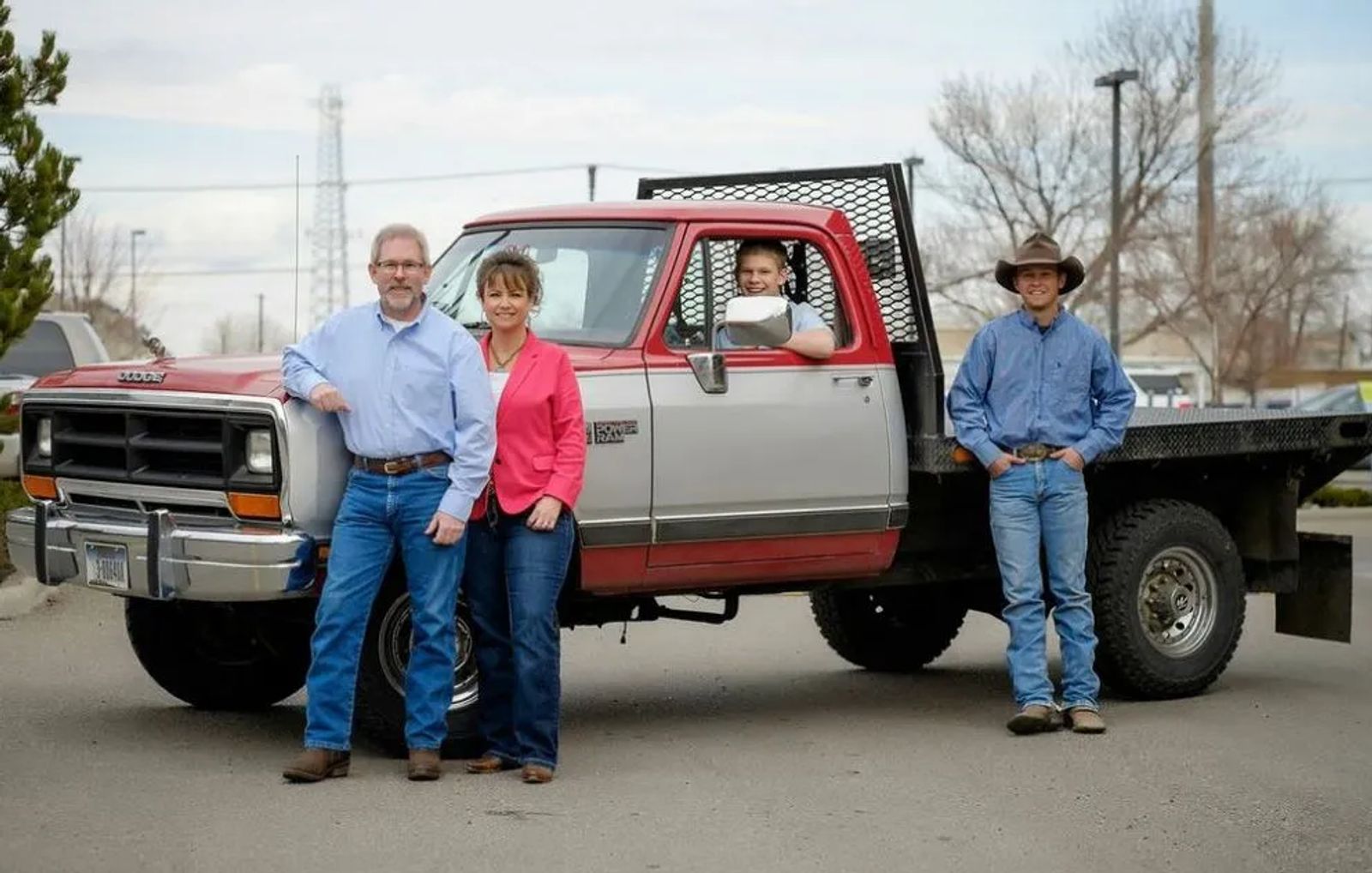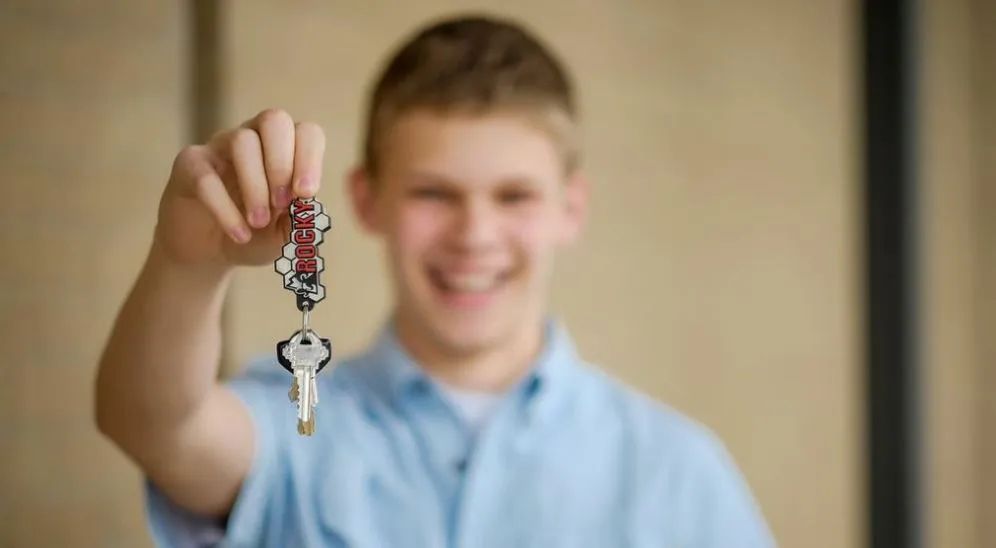
Steering Your Teen In the Right Direction
Keeping them safe behind the wheel
How many times have you driven down the road, only to see a distracted teen behind the wheel texting, talking or checking messages? It's commonplace. It's one of the main reasons why teen driving remains a risky business. According to the Centers for Disease Control and Prevention (CDC), “per mile driven, teen drivers ages 16 to 19 are three times more likely than drivers aged 20 and older to be in a fatal crash.” Motor vehicle crashes are the leading cause of death for U.S. teens. That begs the question, how do we keep our kids safe when they venture out on the road?
“You have to trust your kid from there,” says Vicki Thurston, owner of Thurston Family Insurance, along with her husband, Marc. “We constantly encourage our two sons to follow the rules we’ve set for them. We also encourage our boys to set the rules when other kids are in the car.”
Inspiring your child to take charge or to at least make good decisions may alleviate heartache down the road or even save a life. “My biggest fear is texting and driving,” reveals Vicki. “We’ve told Lucas, our 15-year-old and who’ll probably be taking driver’s education at Skyview this summer, that, ‘if you’re in a car and the driver starts to text, you take the kid’s phone and say you’ll do the texting for him.’”
“Social media in the car is the biggest distraction for sure!” agrees Jodi Stugelmeyer, Senior High’s driver education teacher, as well as business teacher. She’s also co-assistant director of the traffic education program of District 2. “We stress no texting and driving and let someone else answer the phone.”
“Statistics show it takes five years for people to master driving,” advises Jodi, “so why would you even want to take a chance on something?” With 22 years under her belt teaching teens how to drive, Jodi imparts three top tips: 1) leave a space cushion around the vehicle, don’t tailgate, 2) pay attention at all times, always be scanning and 3) put all social media away!
These basic pointers apply to parents, too, as parents play a major part in how their child displays driving abilities. “We need kids to start paying attention when their parents are driving,” stresses Jodi. “The number one thing is that kids pay attention early, before they ever drive. They need to watch their parents. We like to see parents have their kid give a narrative while they (the parent) drive. Shut off all electronic devices and do head checks together — left, right, left.”
“Parents are role models,” states Billings Police Department Crime Prevention and Public Relations Officer Tom Keightley. “If you show kids bad habits like speeding up through yellow lights, then they’ll speed up, or if you don’t wear seat belts then they won’t wear seat belts.” He urges parents to talk to their kids. “Word from the parent goes further. Kids listen to someone they love and trust.”
“Everybody’s concerned for our children’s safety,” adds Vicki. This is certainly apparent in the insurance business while listening to other parents express their worry about their teenage drivers. “Anything can happen in a split second.”
A few of the ways Vicki and Marc cope with this worry is by teaching their sons early on about paying for their choices. “We’ve used the good student insurance discount to encourage the boys to work harder for better grades in school. They know the consequence of not getting good grades is ‘you pay your own insurance!’”
A good student discount adds up to dollars saved. “It can follow a kid through college,” advises Vicki. A parent’s opportunity to save money while helping the child become a more responsible driver delivers a win-win situation. Besides, kids must realize that bad choices cause family anguish and increased insurance costs.
“The chances of a new driver being involved in an accident are incredibly high,” explains Vicki, “so insurance companies take an average, as kids are high-risk. Everyone pays for the high-risk behavior. Some things, though, like no accidents or tickets will be on your side and help bring the rate down.”
This juicy bit of information Vicki and Marc drove home with their 20-year-old, Matthew. Vicki admits that the last thing he wanted was to pay high insurance for his truck. “We tell the boys, ‘if you get a speeding ticket while in this house, we won’t pay the insurance, so that means no vehicle!’”
Vicki and Marc’s parental guidelines and faithful encouragement to Matthew and Lucas make a difference. Teaching accountability and helping your child develop a skill they’ll use most of their life requires commitment.
“It’s a partnership with kids, parents and us,” says Jodi, referring to all involved with driver’s education. “Driver’s ed is a great class for kids. It’s very hands-on. And, we always encourage the parents to attend our parents’ class.”
Jodi considers it rewarding to teach newbies the intricacies of driving. “It’s very near and dear to my heart,” she emphasizes. Over two decades ago when she was planning to go through the training and certification to teach, she remembers asking herself, “How hard can this be?”
She recounts being “shocked” at all of the requirements. However, she wouldn’t trade it for anything. “Some days you just have to use humor in the car,” she laughs. “The other day I had a student that kept driving over into the other lane and I finally said, ‘you need to go over to the USA side – this is the European side!’ You use some humor and keep breathing!”
Jodi, as with all driver training instructors, spends six hours of actual driving time with a student. “This is not near enough,” emphasizes Mark Wahl, director of athletics and activities for District 2, including the driver’s ed program. Even though the State Department of Education requires students to have a minimum of 48 hours of classroom instruction, six hours of driving and six additional hours of observation, for a total of 60 hours. Wahl says kids truly need more drive time help.
This is where parents assume Jodi’s seat in the car. Once your teen progresses through driver’s training and he or she passes the state knowledge test for a Learner’s Permit, parents are then afforded the chance to “get in the car” and log some hours with their child. “We encourage parents to drive with their kids,” says Mark. “One of the biggest complaints we have from our instructors is that the kids don’t have enough driving time.”
It may seem a bit daunting at first to climb in on the passenger side while your son or daughter buckles up in the big seat, however, you’ll help your teen become a safer driver when you provide her with as much extra driving time as possible. As required by the state, your teen must log 50 hours of supervised driving time with his or her parent/guardian to complete the final exam and attain a driver’s license.
If you question your child’s driving proficiency, do what Jodi suggests. “Go out and do guided practice with your kids, especially when the weather changes.” Taking this time does lower the risk of an accident.
According to the Office of Public Instruction, “Certain conditions are especially high risk for teen drivers including dusk/dark/nighttime driving, high speeds, passengers, adverse weather, traffic, and road conditions. Supervise teenagers’ driving under high-risk conditions to be sure that they are able to handle them before allowing independent driving under these conditions." And, even after they get their license and are handed the keys, "Continue to drive with your teen." Keeping an eye on their progress and making sure they aren't learning any bad habits means that they will stay safe and develop into good drivers as they ease on down the road.

Parents Can Control The Keys
Set the rules & enforce them
No texting and driving and no cell phone use. Place all electronic devices in the trunk.
Make sure everybody buckles up.
Follow the rules of the road – this includes speed limits.
Drive sober. No alcohol or other drugs allowed. Even prescription drugs and over-the-counter drugs like cold medicine can affect driving ability.
No racing, tailgating, games or risk-taking whatsoever allowed.
Know Montana's Graduated Drivers License Rules for those under 18. For instance teens under 18 may only have one unrelated passenger in the car and are not allowed to drive between the hours of 11:00 PM and 5:00 AM.
Discuss with your teen a parent-teen driving agreement. You can easily find one online if you’re unsure what rules and consequences you wish to establish. Be sure to follow through with enforcing those consequences.
Did You Know?
Every year, more than 3,000 teens will likely die on America's roads. Sixteen-year-olds are three times more likely to die in a car crash than other drivers.
Keeping Your Teen Driver Safe
Tips from Officer Tom Keightley
- Know where your child is and who they’re with at all times.
- Make sure to talk to your children frankly about driving habits and explain to them why it’s a life or death situation.
- Citizens should call 911 if they encounter young drivers speeding, driving carelessly or recklessly. Even though citizens may think police are too busy, it’s important to know that “911 does prioritize its calls and if an officer is able to respond to the call, the officer will be sent.”









